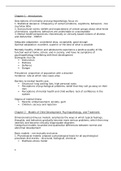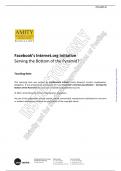Samenvatting
Summary of the complete course: Developmental Psychology & Psychopathology - [ENG] - Y1P5&P6 - B Psychology - VU University Amsterdam
- Instelling
- Vrije Universiteit Amsterdam (VU)
Summary of the complete course: Developmental Psychology & Psychopathology - [ENG] - Y1P5&P6 - B Psychology - VU University Amsterdam
[Meer zien]





